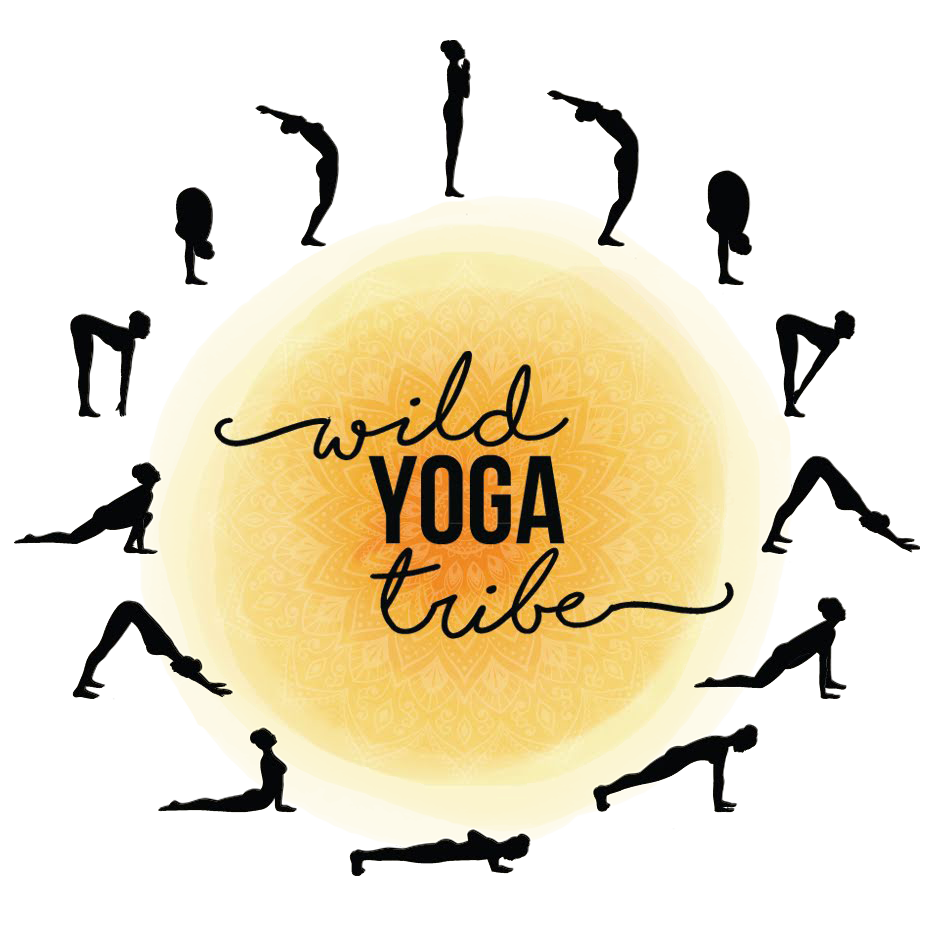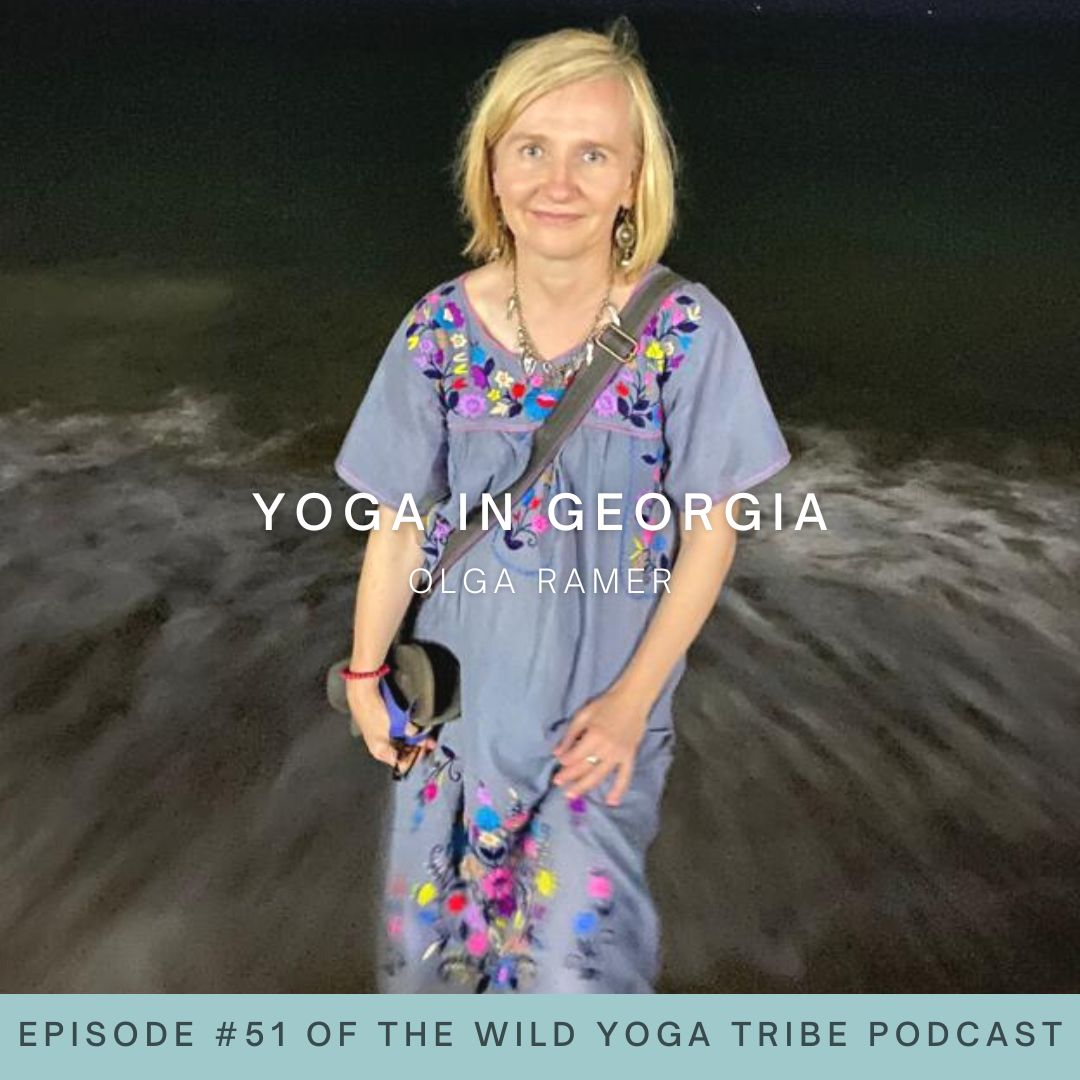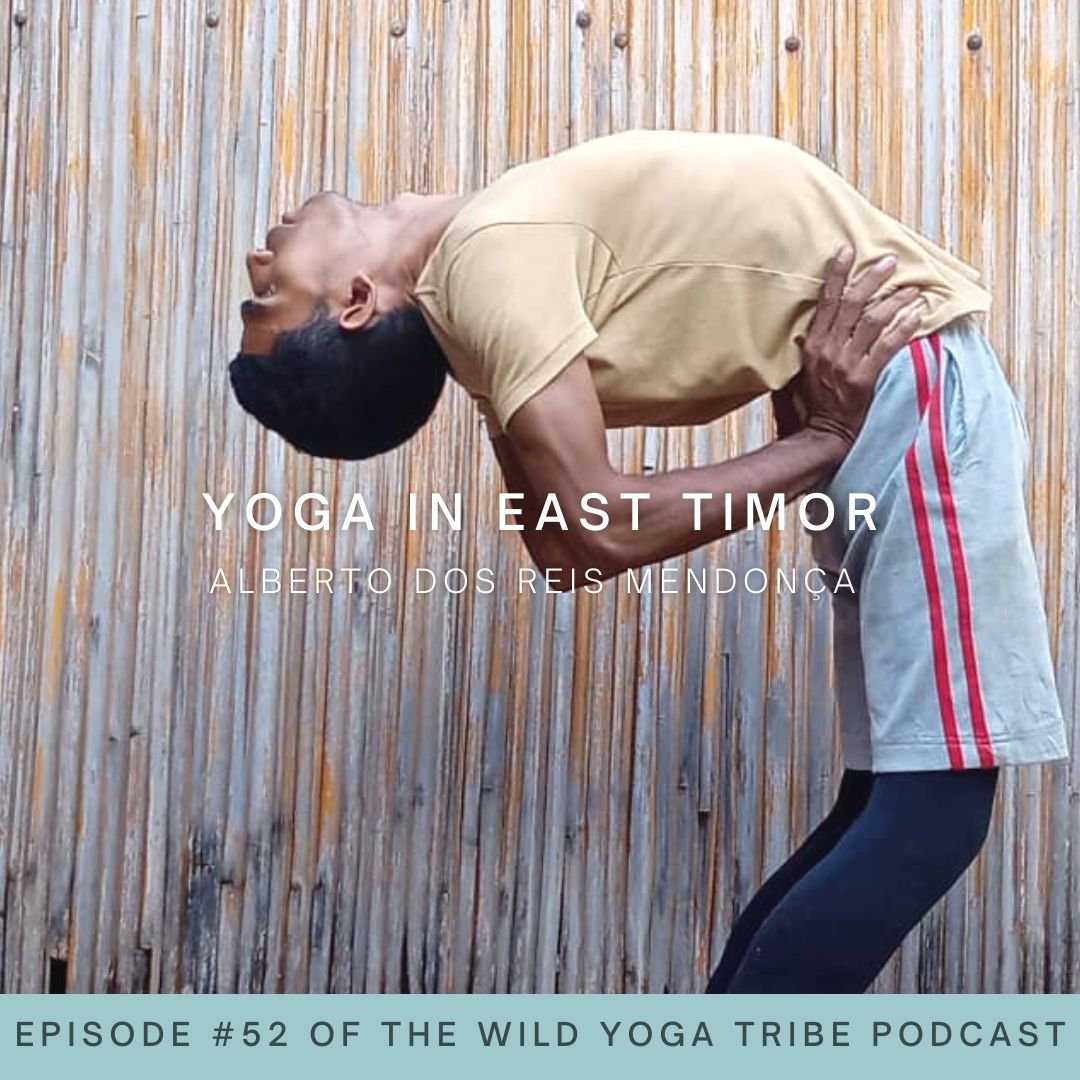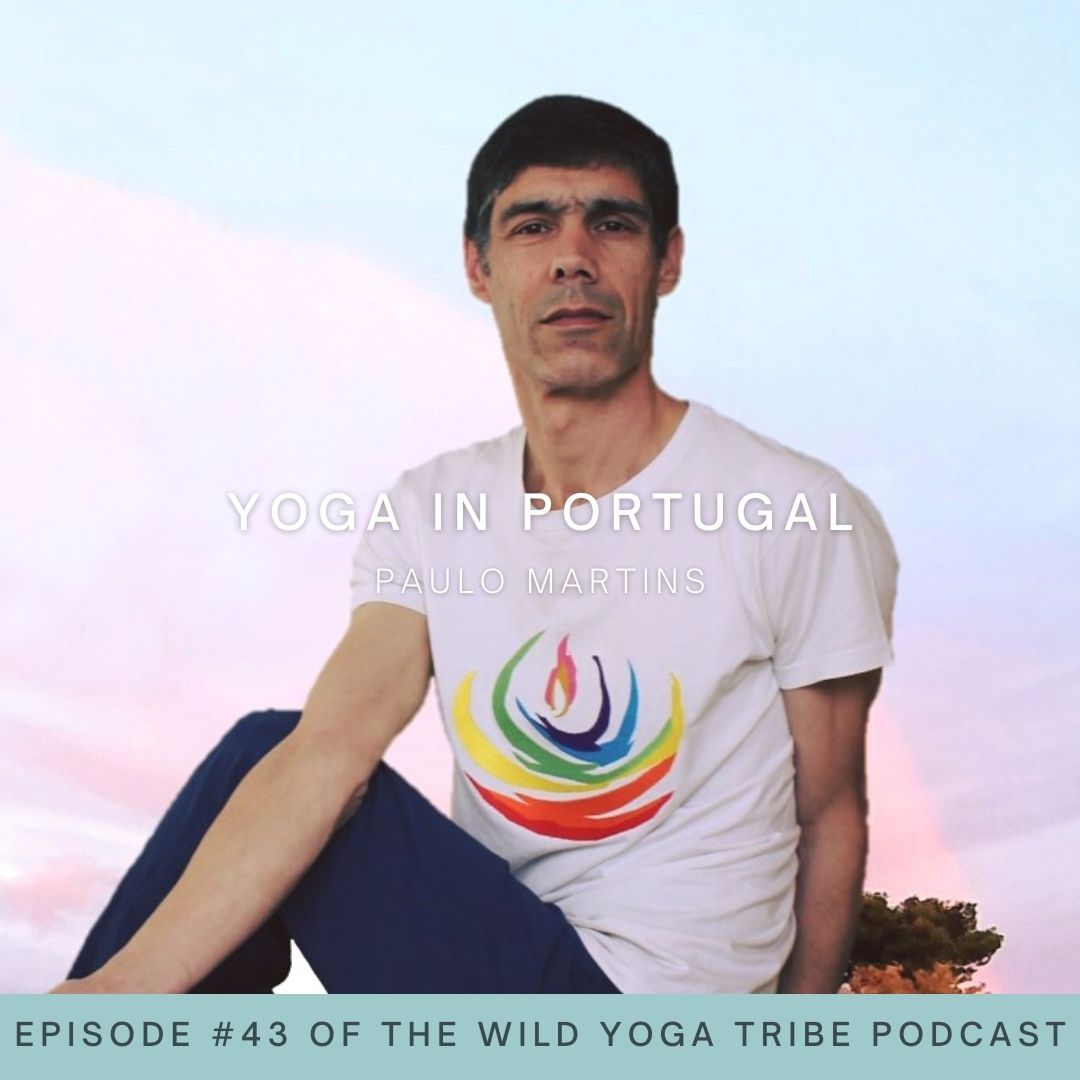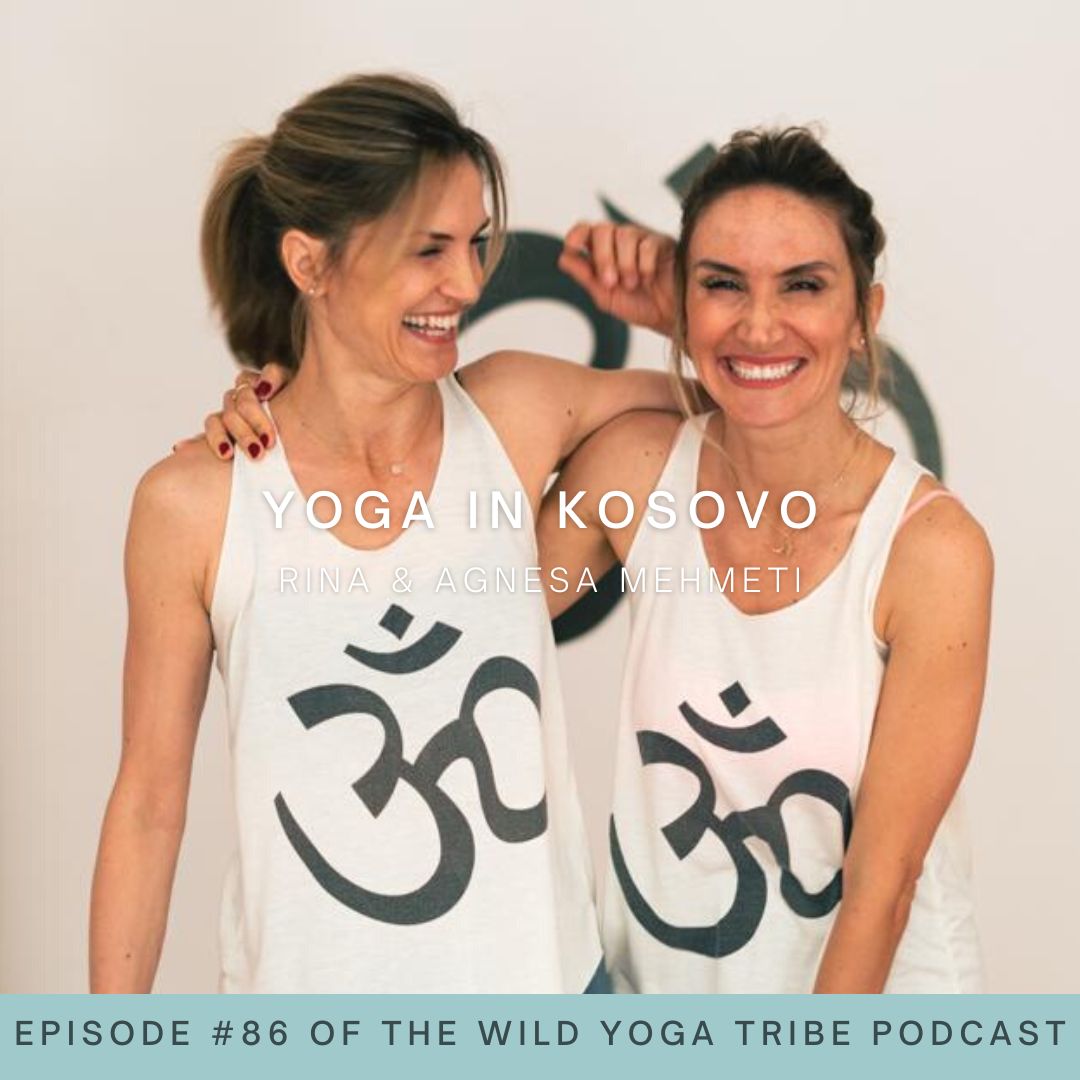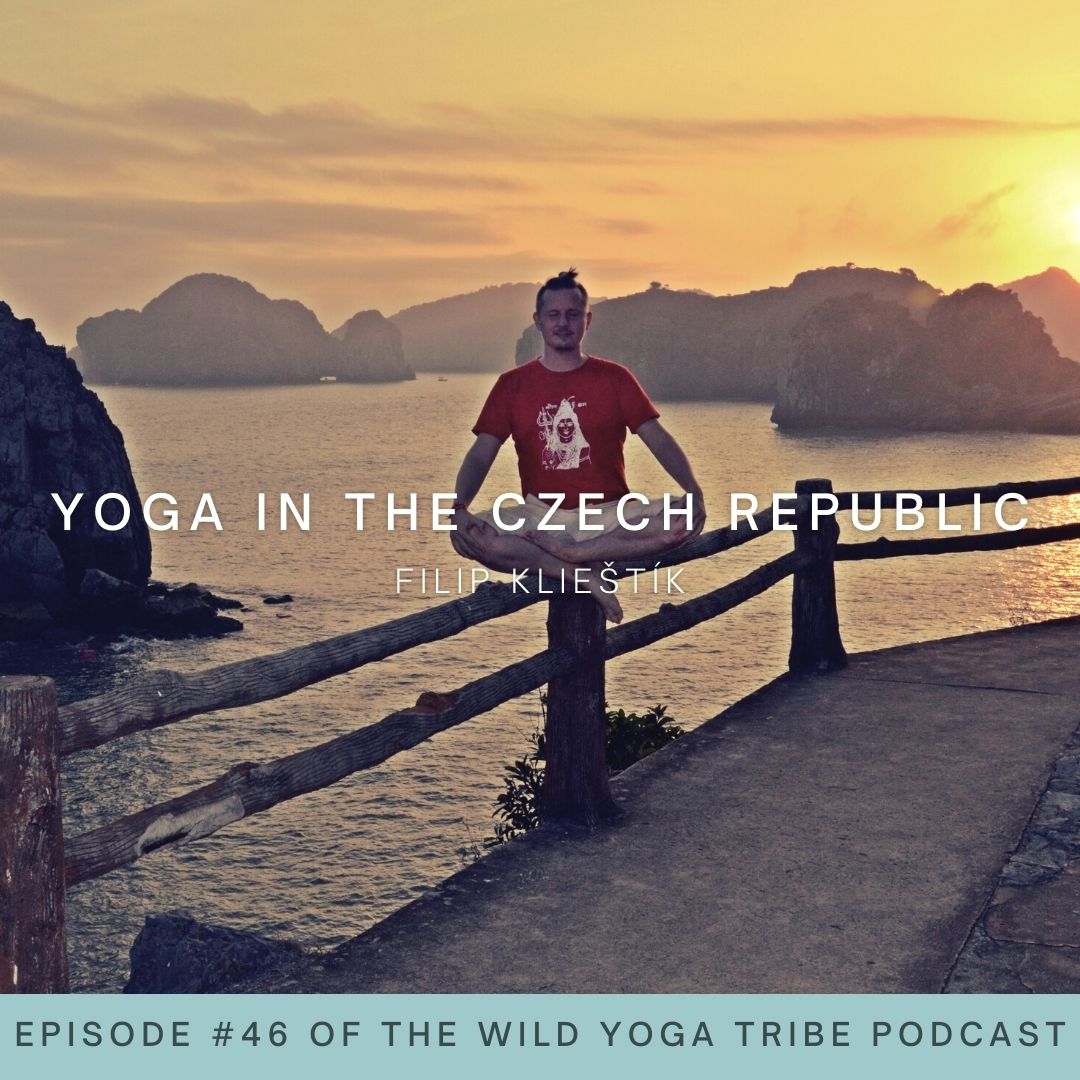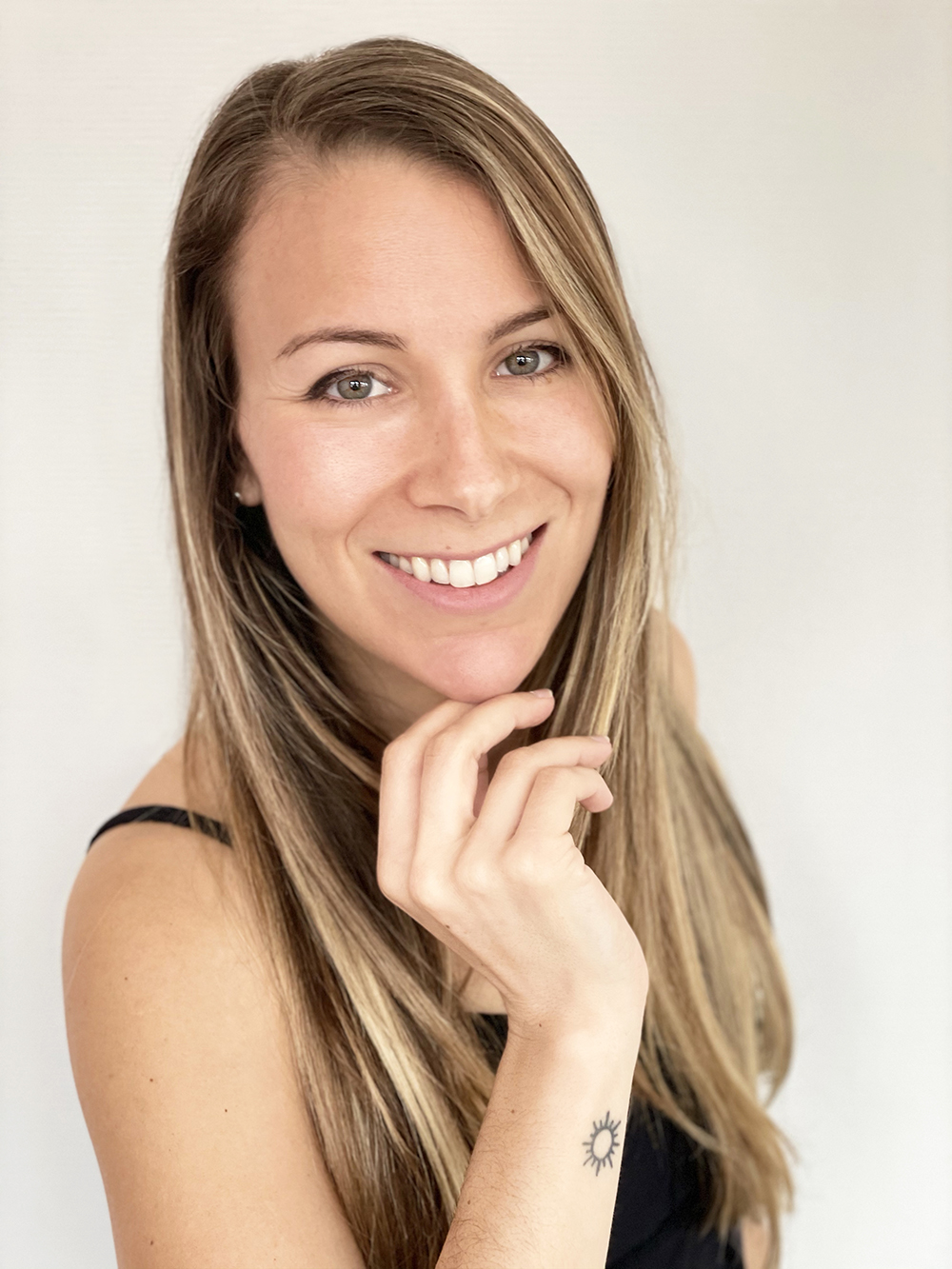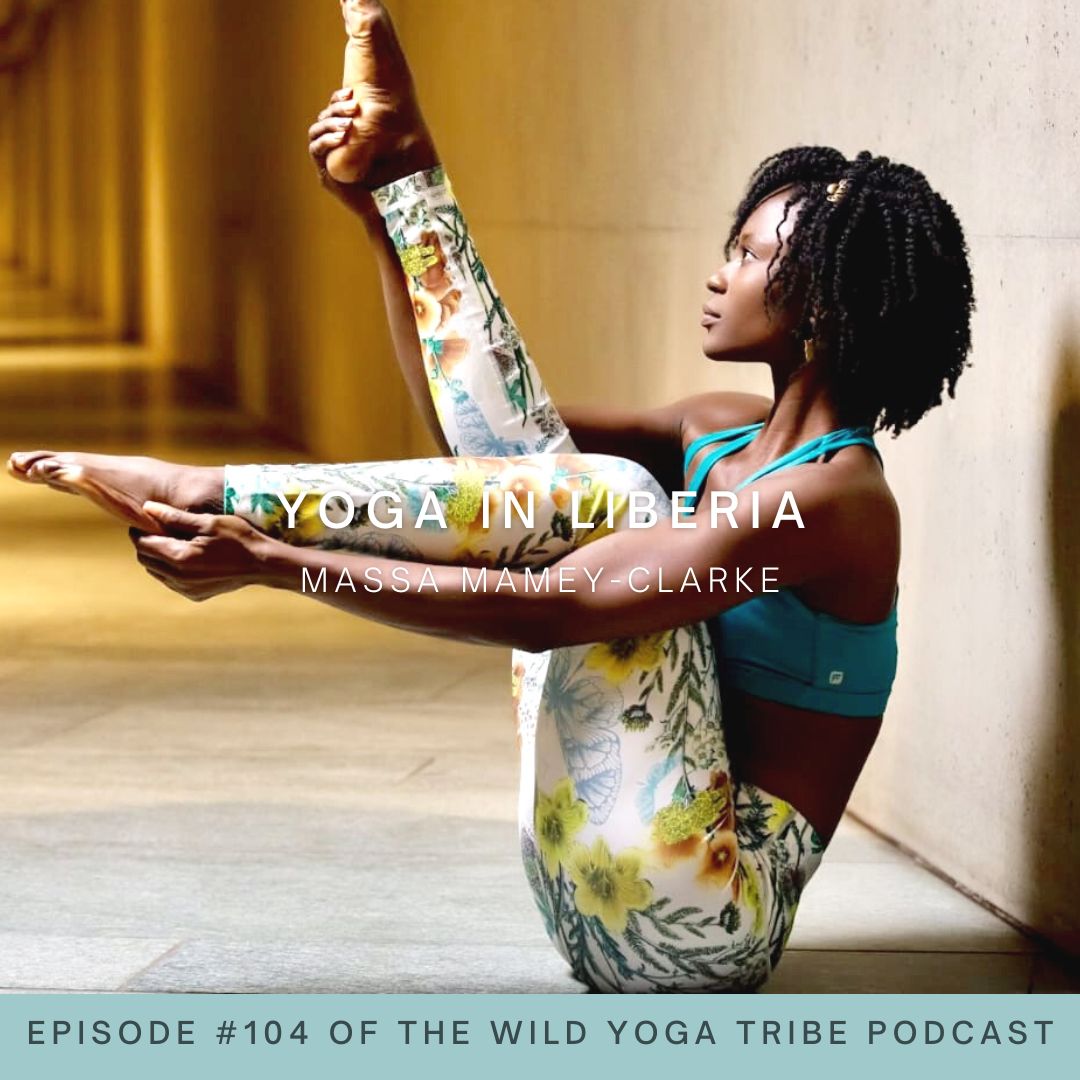
EPISODE #54 – YOGA IN BRUNEI
Meet Vera Chek Lee Kong
Meet Vera, a yoga teacher from Brunei, who shares with us all about what Universal Yoga is as well as advice for yoga teachers everywhere. Welcome to yoga in Brunei!
Wild Yoga Tribe Podcast Episode #54 – Universal Yoga – Yoga in Brunei with Vera Chek Lee Kong
Welcome to Episode #54 of the Wild Yoga Tribe Podcast! My conversation with Vera, a yoga teacher from Brunei, was so fun as we took a really honed in on what Universal Yoga really is. I hope that this conversation made you curious about how Universal Yoga can come from within, while still honoring the anatomical and scientific approach of the body.
If you’re looking to tune into a podcast episode that is all about Universal Yoga, and the difference between being a yoga teacher and a yoga practitioner, then this is the conversation for you.
Tell me more about Vera Chek Lee Kong
Vera Chek Lee Kong is a yoga teacher and studio owner in Brunei. She is the owner of Truharmony Yoga Studio in Bandar Seri Begawan, Brunei. She teaches Hatha yoga (200hrs Certified Vikasa Yoga), Vinyasa Yoga- Fit Flow Fly (300hrs Bryce Yoga), and Universal Yoga (200hrs Certified). She has been teaching for 8 years, and while at first she started teaching at a local studio with smaller groups and privates, she then moved on to teaching in a private office space for three to four people at a time. When the perfect opportunity arose, she renovated a space which is now Truharmony, located at Gadong Central in Brunei.
What to expect in the Yoga In Brunei episode of the Wild Yoga Tribe Podcast
Vera actually came to yoga through a stretching DVDs and YouTube, and then when dealing with gastric issues and chronic bloating, she turned more to yoga and pranayama. She found that pranayama drastically increased her ability to release her bloating and decrease her stomach pain. It was this wish to learn more about Prana, that gave her the push to join a class at a local yoga studio. It wasn’t too long after that that she quit her job, and decided to turn over a new leaf by going to a yoga retreat to relax and reset.
Her search landed her to Vikasa Yoga in Koh Samui in Thailand. Her sister recommended that she do a yoga teacher training rather than a yoga retreat, and her heart knew it was yes!
It wasn’t too long after that until Vera opened her yoga studio in Brunei. At first, there wasn’t a lot of people coming to her yoga classes but slowly it has become more and more busy. Vera has also studied with dozens of yoga teachers around the world and completed so many workshops with Kino McGregor, Dylan Werner, Jason Crandell, Annie Carpenter, Sri Dharma Mittra, Tiffany Chruikshank, and more!
What really peaked my interest was her 200hr Yoga Teacher Training in Universal Yoga. Universal Yoga is something I’ve never heard of before, and I was grateful that Vera took time to unravel how she first came to know about Universal Yoga and what Universal yoga is. Created and taught by Andrey Lappa. Universal Yoga has set sequences based on a highly scientific and anatomical approach.Yet, she says that Universal Yoga comes from within. The principle of Universal yoga is to always be awake and and to be conscious. It turns out that the founder of Universal Yoga is actually an engineer as well, so his attention to detail, anatomy, degrees of motion and movement is truly incredible.
We talked also about how Vera— very recently— burned her legs very badly and has had to recover from this injury and return to her yoga practice and to teaching.
Did you know that Brunei is an alcohol free country? And a cigarette free country as well? While Brunei is a strict country, it has wonderful school systems and medical care. It’s a tropical country, and is very peaceful and relaxed compared to its neighbor Singapore. Vera points out that there is no entertainment in Brunei,
If you’re curious about Brunei tune into the full podcast episode!
Favorite Quote From Vera
“For me yoga is a union of our mind, our breath and our body. So every time I step on the mat, I feel like I’m connected with the space around me, even like myself, like our minds, usually, it starts to flow everywhere whenever we are not aware, but when I’m step on the mat doing the yoga practice, the breath really brings me back to the present moment and the asana really connects with my body.”
What’s in the Yoga in Brunei episode?
Feel like skimming?
What is Universal Yoga?
Yoga that comes from within, not without
What an engineer can bring to yoga as a teacher
Being a yoga teacher is different from a yoga practitioner
Recovering from badly burned legs and coming back to yoga
Connect with Vera
https://www.instagram.com/verayoga/
https://www.instagram.com/truharmony_yogastudio/
Support the podcast:
https://www.patreon.com/wildyogatribe
Want more?
https://wildyogatribe.com/thepodcast/
Everything you need is just one click away! Check out all the resources here: https://linktr.ee/wildyogatribe
PODCAST TRANSCRIPTION
Read + Reflect + Respond
054 Transcript Yoga in Brunei with Vera Chek Lee Kong
[00:00:00] Lily Allen-Duenas: Namaste family. Welcome back to the Wild Yoga Tribe podcast. Today, I am joined with a yoga teacher and studio owner from Brunei. Her name is Vera, and I’m so excited to welcome her onto the show today. She teaches Hatha yoga, vinyasa yoga and universal yoga, which I’m really excited to hear more about.
[00:00:21] She’s been teaching yoga for eight years. Even though she started teaching really locally small groups, she moved into a small private office space. Just for three or four people at a time. When the perfect opportunity arose, she renovated a space, which is now TruHarmony in Brunei.
[00:00:39] So thank you so much, Vera, for being with us here on the show today.
[00:00:43] Vera Chek Lee Kong: Thank you, Lily. I’m happy to join your podcast as well.
[00:00:48] Lily Allen-Duenas: Wonderful. How did you first hear about yoga, or how did yoga come into your life?
How did yoga come into your life?
[00:00:52] Vera Chek Lee Kong: Actually, when I was so much younger, as a teenager I loved to stretch my body. When I’m looking at the face of Yogi, they look so calm and serene. That’s why I fell in love with yoga. At that time, yoga was like a formal stretch and just to calm and relax myself.
[00:01:17] Actually it’s my cousin. She sees me stretching all the time. Then she told me, oh, maybe I have a DVD. It’s beginner yoga. Maybe I’ll share it with you. Then you can learn something from there. Then I just started from there. After that when I graduated from my university, my body was weak because I’m having some gastric problems.
[00:01:44] I always feel bloated, but then I realize that if I focus on my breath , it really is like overcoming my bloating. My cousin told me maybe you should get deeper into yoga or just invest yourself going to a studio. There’s an instructor. She could teach you how to do correct prana, and do correct yoga. Then I was like, yeah, maybe I can just try it out because at that time I just watched YouTube to learn all the yoga poses.
[00:02:18] I am really lucky because when I went to my first studio, I fell in love with the teacher. From there, I continued with my journey into yoga. I’ve been practicing at her studio for around two to three months. After that I realized that my job, it’s not my dream job. So I quit my job. I was thinking, maybe it’s time for me to take a retreat to reset my life.
[00:02:53] Maybe thinking of another new path or journey to start. So I was like, okay, maybe I could just search in Google and look for a place to just relax on a retreat. I searched for a place called Vikasa Yoga. It is a very beautiful place in Koh Samui. The retreat was quite expensive.
[00:03:17] It’s around US dollars $2000 plus it’s very similar to the price of yoga teacher training. My sister told me since you quit your job, maybe you can try teaching yoga. I was like, yeah, that’s a great idea. Since I don’t have any plans. So I was like, okay, I just take those courses. After I came back from the training, I felt really good. Like just a fresh start. Maybe I can choose yoga as a path. That’s how I started it.
The support of sisters
[00:03:55] Lily Allen-Duenas: Oh, so cool. I love that your sister has given you such great advice. and did you say,
[00:04:01] Vera Chek Lee Kong: Yeah.
[00:04:03] Lily Allen-Duenas: she sounds like a great sister. We all need someone looking out for us like that.
[00:04:06] Vera Chek Lee Kong: Yeah, actually I have four sisters.
[00:04:09] Lily Allen-Duenas: Oh, were all of your sisters giving you good advice or was it one in particular?
[00:04:14] Vera Chek Lee Kong: Yeah.
[00:04:15] Lily Allen-Duenas: Oh, good, great. I also would love to know what it is like to own a yoga studio in Brunei? How’s that going?
What is it like to own a yoga studio in Brunei?
[00:04:23] Vera Chek Lee Kong: Oh, yeah. To be honest because I did not intend to teach yoga in the beginning, I just rented a space or just taught in a local studio. At that time, I was looking for another studio.
[00:04:36] I remember going to one local studio. The teacher doesn’t look very welcoming, so I feel like, okay, maybe this is not my space. I went back and talked with my parents, then my parents were like, okay, maybe we need to look for another space for you. You can teach like in your own space rather than sharing or teaching with another teacher.
[00:05:03] So they’re like, okay. We managed to look for that space and renovated that area. So it was really small at first. My studio now is bigger than my previous one. At first, the space was really small. It could fit around maybe just 10 people. But I’m glad my mom and dad helped me in looking for that space.
[00:05:28] Lily Allen-Duenas: Oh, that’s great. Are a lot of people coming to yoga or more doctors recommending, oh, you should go to yoga for stress or insomnia, or is it a lot of young people? What have you noticed about yoga, the popularity of yoga and Brunei.
[00:05:45] Vera Chek Lee Kong: Oh, at first when I started actually my teacher’s yoga studio was just beside me. My teacher is my first teacher. She’s very kind because she was pregnant at that time. So she’s been introducing her old student, referring to me and some of the teachers.
[00:06:05] So that time when I started to teach, there were not a lot of people, maybe three to four people. Because I just came back. So they also tried out whether they love my teaching style or not , but at first There was not a lot of people like I started slowly, like maybe at three to four, and then slowly, it becomes a little bit more people as they bring out their friends.
[00:06:36] If they love the class. Sometimes I teach private groups as well because they love groups. So they don’t mix up with each other. People have their own space. Slowly people bring other people. That’s how I continued with the journey. Yes.
[00:06:58] Lily Allen-Duenas: Wonderful. Since you’ve had such a good journey, an interesting journey with being able to go to Thailand and do your training, and then I know you’ve done so many more trainings, workshops. Oh my gosh Vera it was so amazing reading you’ve done workshops with Kino McGregor.
[00:07:19] Vera Chek Lee Kong: Yeah. Yeah.
[00:07:20] Lily Allen-Duenas: Singapore, Malaysia, Indonesia, Thailand. You traveled all over. I really would love to hear in particular about your teacher training in Universal Yoga, that was something I hadn’t heard of before. Could you tell our listeners more about that?
What is Universal Yoga?
[00:07:35] Vera Chek Lee Kong: Yes. Actually I took Universal Yoga. It was like two years ago before COVID shutdown, it was in 2019. Actually it came from my friend. She’s took the Vikasa yoga training, my first yoga training, and we meet each other there. She told me that she went to Universal Yoga training continuously for three to four years. She took the same training because she told me, after she took universal yoga training, other training doesn’t interest her anymore because she explained to me there’s a lot of philosophy and a lot of things she learned from it. So she told me it’s very interesting training.
[00:08:19] Personally I am a Buddhist myself, I study scriptures from Buddhism. Sometimes I heard a lot of advice from the monks. She told me that my philosophy is quite similar to the teacher, Andrea Lapa.
[00:08:39] He teaches Universal Yoga. So she told me, maybe it’s time for you to meet up with this teacher so you can see whether you like him or not. Maybe I could give it a try. So I went to training two years ago.
Ahimsa, Buddhism, and Vegetarianism
[00:08:57] Vera Chek Lee Kong: I was so shocked because the thing he mentioned, and the things I knew came to fall together. The way he was saying, compassion, like Yogi, needs to be compassion because first thing in yoga, moral, we set ahimsa, like not harming any animals. At the age of 16, I, because there was a CD. When I look at it, they told me that it’s very cruel. It’s showing how animals kill in the farm and how people mistreat animals. How farm animals were being tortured before they are bringing to the plate. So I was like, yeah I was looking at the video. Then at that time I was crying because it was really cruel. I give myself a vow. I was that I will never eat animals on my plate anymore. Since then I’ve become a vegetarian. Yeah. Part of me became a vegetarian because of Buddhism as well.
[00:10:04] So from that time when Andrea Lapa told me that Yogi has to be compassionate, I said, yeah, it should be like that. Even in Buddhism, we also need to be compassionate. So I thought, that really touches my heart.
[00:10:21] Yoga has really changed my body and changed my mind as well.At that training, we did some pranayama and basically Andrea Sequence in universal yoga is quite unique. It’s scientifically he’s using scientific methods like how the joints are turning, how the muscles are stretched. At the beginning of the sequences he uses simple sequences. At the end, he would use more complicated sequences to mix up and to let your body feel more. After that training, I feel like I became really more calm, more knowledgeable and it changed a lot in my diet, my body mentally, physically. Starting from there, when I was brought back to my studio to teach, and I realized that students had the same feeling as well, they told me yoga really is universal.
More about Universal Yoga
[00:11:29] Vera Chek Lee Kong: Comes from within after they completed the yoga class, they feel really calm inside and their energy feels balanced. So actually from Andrea, he has four rules of Universal Yoga is to always be awake and conscious. The principle of Universal Yoga is during the practice, everyone has to be focused on their own. Sometimes holding in the posture, we just need to close our eyes, breathing, and then you can go internally. Then I loved it when he told us that universal yoga is like being karmically free. To follow your own karma. And not that of your teacher, if you copy your teacher, you will repeat your teacher’s karma. We just have to work on our own style, our teaching styles. A lot of people who practice yoga, they don’t go so deep. They just maybe want to be healthy and want to have a nice long lean body. But universal yoga, it goes inside. Like we have a conception of the Maya kosha we have different bodies of different shells and layers of body.
[00:12:51] Like we have this outer sight shell, and we have the internal shells like the energy. The It practice, the practice goes inside, different layers from the shell. It’s not just the outer layers. And the four rules are like you are using the goal of yoga, like unification balance and control to spread the unity balance and control to each shell.
[00:13:21] And I really feel that logic brings me back to the origin of yoga. I’ve been practicing for eight years. If I’m doing flow every day, it will be really boring. I always came up with ideas like How should I practice? But after I came back from universal yoga I don’t really need to go to other training sessions anymore.
[00:13:49] You just focus on the simple things and focus on the system. Then you always would bring back to where you were from the beginning.
[00:14:01] Lily Allen-Duenas: Wow. It’s amazing to hear how universal yoga is always about being awake and conscious and how you describe that it comes from within, but at the same time, you, at the very beginning, you described it as being scientific or anatomical in its approach. Is that how I’m curious about how it does both to be so karmic and energetic and at the same time. So sciencey and anatomically based, could you explain more?
How is Universal Yoga both scientific and energetic in its approach?
[00:14:30] Vera Chek Lee Kong: Actually the scientific base is based on our body. I’ll just give a simple answer. Simple example, like our shoulders we have, where can we move? Usually in yoga classes like normal vinyasa classes. We rarely did stretches around our shoulder joints. We did a lot of vinyasas, a lot of chaturanga and all that stuff.
[00:14:59] But we rarely do the shoulder joint stretches as you extend your arms and out towards the side, you are doing the external rotation of your shoulder joint. Then as you bring your arms in, you are internally rotating the shoulders in. We have these two, two stretches, then your hands as well. If you are doing the downward dog stretches two arms down, you are doing longitude backward. Then when you change it to a right post where you are in a seated position, then two arms extend back. Changes in the arm stretches as well. So instead of shoulder joints, we have the elbows as well. If you bend the elbows, there’s another stretch. So you extend your arms external rotation.
[00:15:48] Then you can bend your arm, external rotation. The stretch feels different again. So it’s very fun. One more thing is like why we are stretching the joint is because there’s a lot of marma points like the energetic point in our body, which connects to our chakra.
[00:16:06] Our chakra is the main energy system. So all this joint, all the marmas point is around the joint. You can really feel the energy inside the body. It’s such a unique way to train the body and to let people be more aware of the energy, because we couldn’t see energy, you can only feel it in your body. So when I was saying why Andrew was saying that he’s using the scientific method. He’s using an anatomical method as a safe way to approach yoga then to go deep into the body, which is, he’s a very clever man. He’s yeah, he’s an engineer. He always told us his story. He’s an engineer. So everything he studies he needs to tell you longitudinal like hundred 180 degrees, 90 degrees, all these types of words.
[00:17:03] Lily Allen-Duenas: Oh, wow. That’s very specific.
[00:17:06] Vera Chek Lee Kong: Yes.
[00:17:07] Lily Allen-Duenas: Then at the same time, you’re mentioning the koshas, marma points, and the chakra system. So clearly it’s engaging and involving all of the ancient wisdom of, and traditions of yoga as well. What an amazing and beautiful thing. So exciting to hear about this.
The Power of Pranayama
[00:17:23] Vera Chek Lee Kong: Yeah, I’m regretting because actually it took 300 hours to complete the training at that time, because I’m having another plan with my family. So I couldn’t finish up the last hundred hours. A hundred hours is going internally like you don’t do yoga anymore. It’s all about prana and meditation. Then it was, just listening to him. Then he guided us in the pranayama with long haul breath, retention, breath. There are a lot of different pranayama which I’ve never encountered. So we just followed what he was saying to my surprise. At the end of the pranayama my mind was in complete silence. Like I’ve never done this before. Like complete silence. There’s no sound in my mind. I could hear myself so clearly. So I was so shocked. Wow. It really stops time and stops my mind. I thought, oh, okay. It’s to bad I couldn’t join the last part of the training.
[00:18:30] Lily Allen-Duenas: Oh, wow. I love that. Everything goes still and all time is lost. It’s rare. It is very rare. And if, for me, and I think for the average yoga practitioner to achieve that state, it’s just such a blissful experience. I’m so glad that you’ve brought it up. It’s a special thing to share and I’d love Vera to know too. I just would love to hear your personal definition of yoga. What does yoga mean to you?
What is your definition of yoga?
[00:19:02] Vera Chek Lee Kong: For me yoga is a union of our mind, our breath and our body. So every time I step on the mat, I feel like I’m connected with the space around me, even like myself, like our minds, usually, it starts to flow everywhere whenever we are not aware, but when I’m step on the mat doing the yoga practice, the breath really brings me back to the present moment and the asana really connects with my body. Usually I practice yoga. Like most of the time, like every day, like my mom and sister. Whenever they saw me practice yoga it was oh, we feel so tiring looking at you like sweating and being so disciplined to practice every day. But I told my mom if I don’t practice, I feel my life. It’s not centered.
[00:20:05] It’s like moving away. Like whenever there’s social media, there’s news. My mind, everything is scattered around. It’s like bringing me all around. But when I’m back to yoga or when I’m back to pranayama, I feel like I’m connected with myself. I’m not, my mind is not scattered around or being influenced by social media.
[00:20:32] So take some time to practice yoga and meditation and limit our usage of social media. It would be good for our mind.
[00:20:42] Lily Allen-Duenas: Oh, yeah, be good for the whole world. for sure.
[00:20:46] Vera Chek Lee Kong: Exactly.
[00:20:47] Lily Allen-Duenas: I love how you mentioned that your mom or your sisters are watching you like, oh, that looks so tiring. How do you do it every day? You’re so disciplined. You’re just sweating. It’s amazing. Because when I don’t practice for, two days in a row or if I’m sick and I can’t practice, Asana or a pranayama practice, there’s a lot of of aspects of yoga. That even meditation, if you’re not, if you’re really sick, it can be very hard to breathe because your nose is running so much.
[00:21:16] Anyway I digress, but I’m saying that when I don’t practice for a couple days, I really feel it. Mentally I feel my mind feeling. I feel more reactive. I feel more, I don’t know, like it’s itchy. Like you feel like you just need to, you need to do it.
Unable to do physical yoga due to a horrible burn injury
[00:21:34] Vera Chek Lee Kong: Yeah, I mentioned that I’ve burned my legs, I have an injury at my age. It was the worst life ever because I couldn’t walk. Every time I go anywhere, I need people to help me and I couldn’t practice yoga at that time. I could just only stay on my bed, like doing very gentle stretches, but I’m glad. Pranayama and meditation really helps. Like I’m doing like an alternate nostril, all those pranayama it really centers my mind. Yeah. Because if not, my mind would be thinking like what would happen with my legs? I couldn’t do yoga. My legs were getting weaker. All these kinds of negative thoughts will be wandering around in your mind.
[00:22:24] But whenever I’m practicing pranayama, it centers me and brings me back. When that happened, my mind started to change. Like it’s okay. You just need to rest. You need to take time. No need to worry. So I believe that yoga or pranayama is really good for everyone. Even when you are in adversity, sometimes it will really help you.
[00:22:52] Lily Allen-Duenas: Yeah. How did you burn your legs? What happened?
How did the burn injury happen?
[00:22:56] Vera Chek Lee Kong: Oh, actually I was cooking the noodles. I think it’s garlic oil noodles. The last part was to let the oil cook, but I had forgotten that oil is different from water. You will need to boil it, but oil doesn’t boil. So I was looking at the pot. I was like, oh, the oil doesn’t burn. Maybe it’s not hot enough. I’ll change it into a pan. Because our kitchen is really small, there’s a little space at the corner. Actually, I shouldn’t put the pot in that space, but I put it there, no place to put it anymore. So I change it to the pan and it’s just so sudden the outer edge of the pot just spills off.
[00:23:42] Then all the left side of my legs is burned by the hot oil. It was terrible. It was a terrible experience. Like completely into a trauma kind of fear at that time. My mind just blackout. I don’t know what happened. Luckily my sister and my dad heard me screaming in the kitchen.
[00:24:05] They ran out and. I told them it was oil, then they just directly took a cream. The cream actually is a burning cream . It really helps to soothe and cool burnt injuries. So my dad took it from the fridge and directly he used up all the cream just to cover all my legs. But after around two hours, the pain came back again. So I went back. I believe I couldn’t sleep at night if the pain continues. So I decided to go to the hospital. The doctor gave me the strongest pain killer and they washed out the cream. A terrible experience.
[00:24:53] Lily Allen-Duenas: I’m so sorry. I’m so sorry about that. That’s just awful. So to bring it back to more of a positive thing and so to distract you, cause I know you’re still healing. I know that’s something I know it just happened. I’d love to hear from you about being a yoga teacher. How being a yoga teacher is different than being a yoga practitioner.
How being a yoga teacher is different than being a yoga practitioner?
[00:25:14] Lily Allen-Duenas: What can you tell me about that?
[00:25:16] Vera Chek Lee Kong: Oh yeah. It is different because when you are practicing on your own, you just need to focus on yourself like you focus your breath, and sometimes you can challenge yourself into different asanas and things. When you are teaching students, everything is on them. You have to look at your body, you have to be aware of the space around you.
[00:25:44] You can see some students, they can’t do this. Sometimes they are showing you the tiring face, or sometimes you can feel they are not willing to do this thing. A lot of things happened during that time. Usually when I first start to teach, I felt so down because I haven’t changed from personal practice. Into another teacher, you should be looking around and you are not doing any Asana.
[00:26:20] The students are the ones who are doing their asana. You just need to correct them and adjust them. It really takes me years, like six, I think five, five to six years. You can see I’m doing a lot of teacher training. Understanding how to be a student and understanding how to be a teacher. Agood teacher and understand to be a good student.
[00:26:46] That’s why from there, I started to learn more about how a teacher should be. Whenever I’m teaching, I would separate myself from my poses. Most of the time I don’t practice when my student is practicing, because if I’m practicing, it would be me.
[00:27:09] But if my student is practicing, I will be looking at them and checking whether they are okay or not. So it’s a really different setting and a big mind shift.
[00:27:22] Lily Allen-Duenas: Yeah, it is a huge mind shift. I know that a lot of yoga teachers, they can get stuck in demonstrating the yoga poses because if you’re teaching to beginners and they don’t know what Tree poses for Ajna or UCaaS. They, they don’t know. Even if you say, okay, scoop, arms up, sit back down, arms, go like they do, they get so confused without the demonstration.
[00:27:46] So what advice do you give to yoga teachers who are wanting to shift away from doing all the asanas and instead be watching their students and giving verbal instructions? Do you have any good advice for teachers.
Advice for yoga teachers
[00:27:59] Vera Chek Lee Kong: Yeah, I think we always have a second plan because usually you have a plan for beginners. Then you have another plan, the people came, they might be more advanced or much beginner. So you have to plan in mind, like if something happens that’s why you have to give different variations. That’s why I love universal yoga. Because in that yoga teacher training, the teacher gave us options, like from beginner level to really advanced level. When the beginner came in, okay, it’s a mixed class. Most of our classes are either beginner or advanced. Teaching yoga actually is not easy if you are doing a flow class, because I came from a flow class base whenever I was teaching Asana. I always need to demonstrate the pose, I don’t have the time to. Look at the students. What I love about Universal Yoga, that there’s a lot more like Hatha style. I can look at everyone when I just do one pose. Okay. Which is fine. I got that time to look at them. Usually now I teach less of a flow. I teach more like Hatha style. So I have time to look at students and I can give different variations and options. Yeah. I think it’s important to have your regular student in the class because regulars know your styles but new beginner students, when they come in, have no idea what you are teaching about so they can just look around. Regular students really help a beginner student because you don’t need to demo, you just tell the regulars, okay. You just do this and show it to the newcomers.
[00:29:56] Lily Allen-Duenas: Yeah. When you have regular practitioners in the class with you, it does make it a lot easier. Because then they’re demoing for the rest of the class, essentially.
[00:30:04] Vera Chek Lee Kong: Yes.
[00:30:04] Lily Allen-Duenas: I get what you mean. So Vera, I would love to hear more about Brunei because I’m sure that some of our listeners, maybe haven’t heard too much about it before. Maybe they aren’t even sure where it is on a map even. Could you tell us more about Brunei, please? We would love to hear about it.
What is Brunei like?
[00:30:19] Vera Chek Lee Kong: Oh, Brunei actually is located on a big island called Borneo. It’s quite near to Singapore and Brunei is situated between Sara and SBA, which is the west of Malaysia. With Indonesia. So all these three countries became Borneo. Most of the people who knew Singapore. They don’t know Brunei because it’s such a small country and it’s located. The Borneo yeah. Most of Brunei it’s tropical. Usually it’s either hot or rainy seasons and the people who live in Brunaei, usually are Malays. They are considered the locals. I would say this is a Muslim country. It’s a strict country under Muslim law, you can’t drink and no alcohol, no cigarettes. But it’s a perfect place for people to have family.
[00:31:31] If you decide to have a bigger family and you want to have children this place is good for education. The health system, like the hospital it’s free if you have Bruneian education as well. People who live here are relaxed. Stay at a relaxing pace. I know if you are living outside of Brunei, if you’re living in Singapore or us, when you come into Brunei. You feel like, oh, I have nothing to do. It’s too peaceful. There’s no entertainment. So most of the time we spend here is grocery shopping. Sometimes we go to cafes for a drink of coffee and then come back. It’s such a peaceful place. There’s no entertainment.
[00:32:28] Lily Allen-Duenas: No entertainment, like no music, concerts, no
[00:32:31] Vera Chek Lee Kong: No music, concert movies. Yes. Movies.
[00:32:35] Yes, but just no drinks, no bar. Yeah, no games like certain games like games like pokers, all those things are being forbidden.
[00:32:47] Lily Allen-Duenas: Okay, so no gambling?
[00:32:49] Vera Chek Lee Kong: No gambling, alcohol or cigarettes. Yeah, it’s a boring country.
[00:32:56] Lily Allen-Duenas: I think it sounds very lovely. I love how you described it as peaceful, calm and tropical, especially when you compare it to your neighbor, Singapore. I’m sure that people think, wow, this is peaceful.
Yoga in Brunei
[00:33:05] Vera Chek Lee Kong: It’s less stressful. It’s less stressful. Yeah. I believe like Singaporeans there’s a lot of people doing yoga, but compared to Brunei it’s such a peaceful country. Most of the people would prefer gym work, or cycling. Cycling is really popular here because you have that kind of disco music. People really push their limits since yoga is such a peaceful pace as well. The people here are so relaxed already.
[00:33:37] Lily Allen-Duenas: Vera, if people want to, get in touch with you or learn more about your yoga studio, TruHarmony I will make sure to link to your website into your Instagram in the show notes, as well as on my website, wild yoga tribe.com. But do you want to tell them verbally here, how and where they can find you.
How can people get in touch with you?
[00:33:54] Vera Chek Lee Kong: Yeah. I believe Instagram is fine. Usually they can just text me or email me. I have written all the details actually in my Instagrams as well. They can just hit the emails and press the button for WhatsApp. They can connect with me.
[00:34:12] Lily Allen-Duenas: Oh, perfect. You made it very easy for everyone.
[00:34:14] Vera Chek Lee Kong: Yeah.
[00:34:15] Lily Allen-Duenas: Thank you Vera so much for being a guest on the show today. And for this beautiful conversation, it has been a joy to be with you.
[00:34:22] Vera Chek Lee Kong: Yeah. Thank you, Lily. Thank you so much for interviewing me. Yeah. Thank you so much.
Wild Yoga Tribe Pocdast Outro
[00:34:29] Lily Allen-Duenas: Thank you so much for tuning in to this episode of the Wild Yoga Tribe podcast. My conversation with Vera, a yoga teacher from Brunei was so fun as we really honed in on what Universal Yoga really is. And I hope that this conversation made you curious about how Universal Yoga can come from within while still honoring all the scientific and atomical approaches there are to the body. If you’re looking to tune into a podcast episode, that’s all about Universal Yoga and the difference between being a yoga teacher and a yoga practitioner. Then this is the conversation for you. Thank you for listening to the Wild Yoga Tribe Podcast. Be well.
The Wild Yoga Tribe, LLC, owns the copyright in and to all content in and transcripts of the Wild Yoga Tribe podcasts, with all rights reserved, including right of publicity.
What’s Okay
You are welcome to share an excerpt from the episode transcript (up to 500 words but not more) in media articles (e.g., The New York Times), in a non-commercial article or blog post (e.g., Elephant Journal), and/or on a personal social media account for non-commercial purposes, provided that you include proper attribution and link back to the podcast URL. For complete transparency and clarity, media outlets with advertising models are also welcome to use excerpts from the transcript per the above.
What’s Not Okay
No one is authorized to copy any portion of the podcast content or use Lily Allen-Duenas’ name, image or likeness for any commercial purpose or use, including without limitation inclusion in any books, e-books, or on a commercial website or social media site (e.g., Instagram, Facebook, etc.) that offers or promotes your or another’s products or services. Of course, media outlets are permitted to use photos of Lily Allen-Duenas from her Media Kit page or can make written requests via email to receive her headshots folder.
